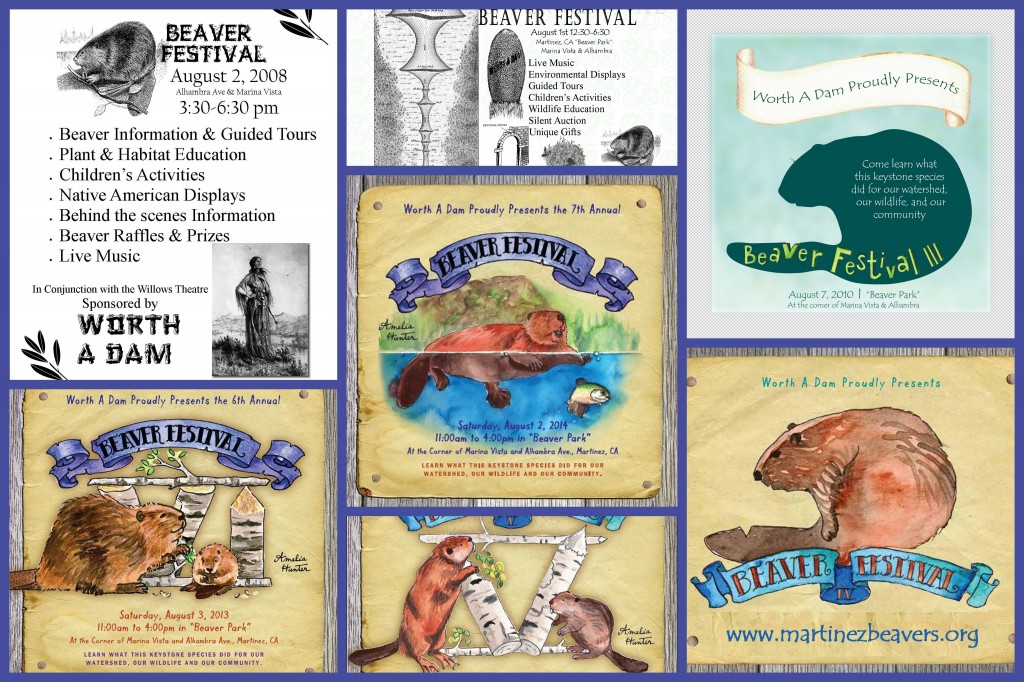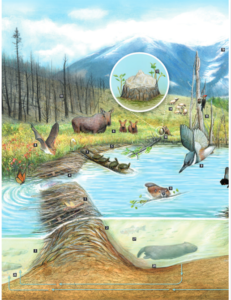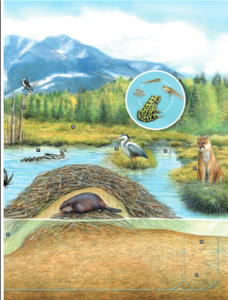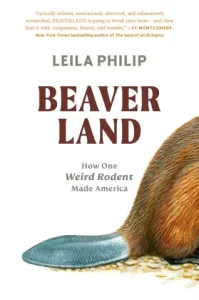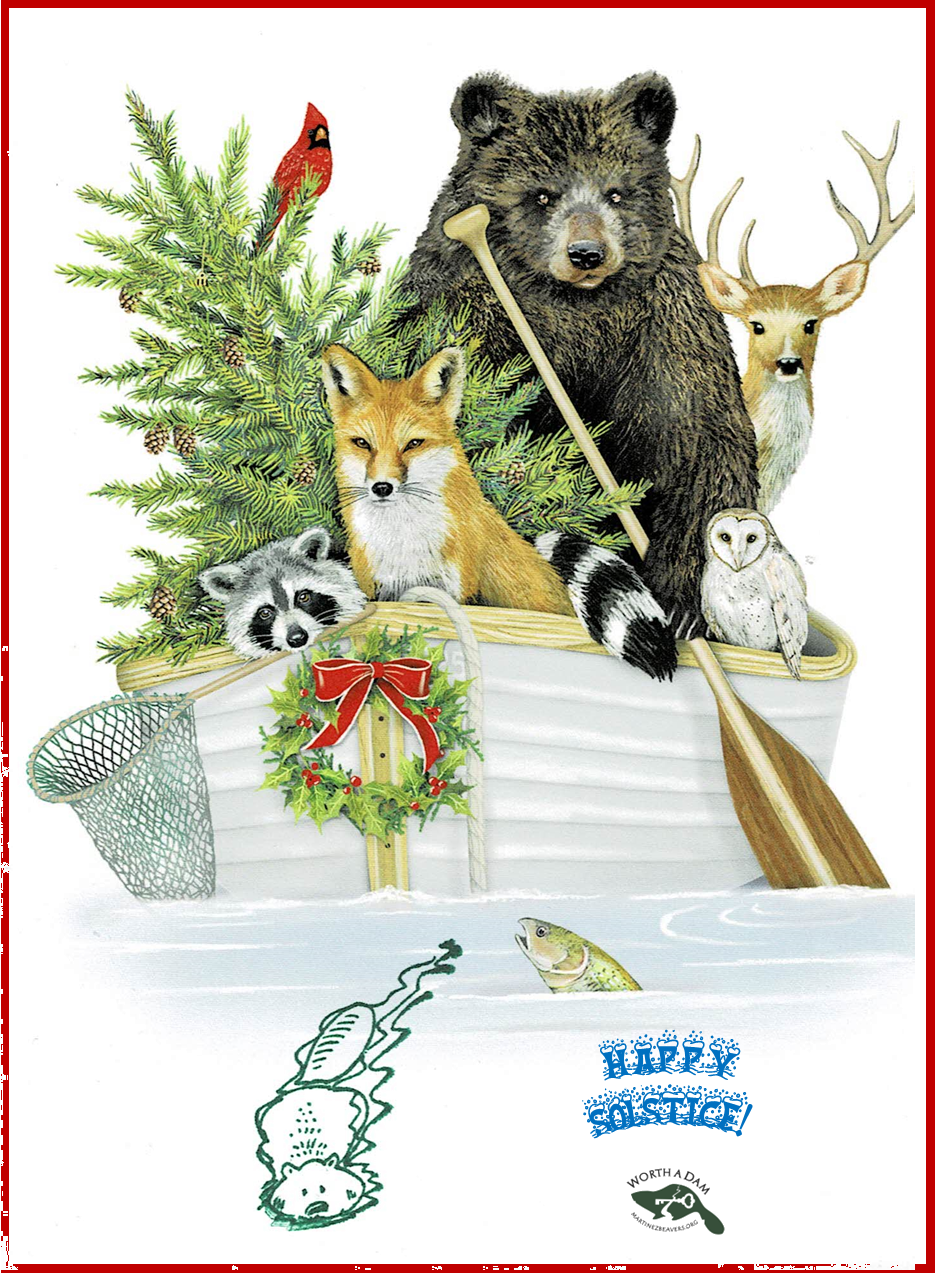What built America and can help fight climate change? Beavers, says HC prof in new book
“They shaped our country’s landscape and jump-started capitalism on this continent,” said Leila Philip, a professor of English at the College of the Holy Cross, who also teaches in the Environmental Studies Program, and author of “Beaverland: How One Weird Rodent Made America,” which went on sale earlier this month.
There are several articles about Beaverland this morning proclaiming that the rodent can “Fight climate change”. As much as I adore beavers and boast of them constantly I freely admit that’s bunk. They can’t FIGHT climate change. Climate change is hear to stay. Even if humans stopped burning fossil fuels today and for the rest of time there is so much carbon already in our atmosphere we can’t stop it from happening. Sequences have been set in motion that cannot be altered. With or without beavers.
However, beavers CAN help us COPE with Climate change.
Which, aptly enough, is the subject of this year’s beaver festival activity and the grant that I just turned into the Fish and Wildlife committee. They have kindly provided grants to our festival since 2010, let’s hope they continue to think beavers matter.
Beavers: Climate Superheroes
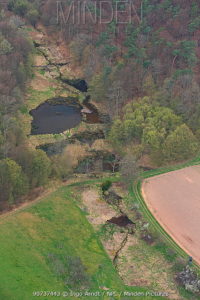 As California heats up and dries out it’s becoming even more important to find tools that can help the golden state adapt to its changing climate. Lucky for us our streams are full of climate heroes that know just what to do. Beaver dams can store water to mitigate drought and recharge the aquifer. Damp soils reduce the spread and speed of fires and provide valuable wildlife refuge during firestorm events They also act as speed bumps during flooding and make waterways more manageable and robust. This year CDFW recognized the valuable role beavers play and recommended embracing them as part of “a nature-based strategy that can aid in reducing wildfire risk, mitigating drought and combating climate change.”
As California heats up and dries out it’s becoming even more important to find tools that can help the golden state adapt to its changing climate. Lucky for us our streams are full of climate heroes that know just what to do. Beaver dams can store water to mitigate drought and recharge the aquifer. Damp soils reduce the spread and speed of fires and provide valuable wildlife refuge during firestorm events They also act as speed bumps during flooding and make waterways more manageable and robust. This year CDFW recognized the valuable role beavers play and recommended embracing them as part of “a nature-based strategy that can aid in reducing wildfire risk, mitigating drought and combating climate change.”
 Helping children understand how our climate is changing is a daunting task. As future stewards who are inheriting the world we have altered they deserve to know what they’re getting into. But they lack the sense of history to remember how things ‘used to be’ and lack the context that could allow them to see that there are more fires and more heat waves than there once were. Even the discussion of climate change is so distressing and ominous for adults it can be hard to undertake. Explaining how beavers can help allows teachers to share the bad news without overwhelming children. The resilient story beavers encourage allows a discussion of the negative climate consequences we face while still offering rays of hope.
Helping children understand how our climate is changing is a daunting task. As future stewards who are inheriting the world we have altered they deserve to know what they’re getting into. But they lack the sense of history to remember how things ‘used to be’ and lack the context that could allow them to see that there are more fires and more heat waves than there once were. Even the discussion of climate change is so distressing and ominous for adults it can be hard to undertake. Explaining how beavers can help allows teachers to share the bad news without overwhelming children. The resilient story beavers encourage allows a discussion of the negative climate consequences we face while still offering rays of hope.
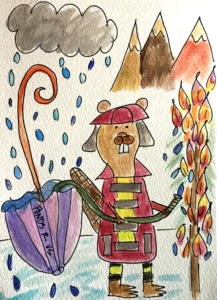 The ”Climate Superheroes” activity offers a concrete way to outline the problems while tying each challenge to a corresponding strength or skill presented by beavers. Participants will be children attending the 14th annual beaver festival held on June 24, 2023 at Susana park in Martinez California. For example, the threat of fires is helped by the saturated foliage around beaver ponds. The increase in temperatures is aided by the presence of microclimates around beaver ponds, and so on. For this activity children will receive a bookmark describing beavers as climate superheroes on the front side. In back there will be spaces for 6 stamps
The ”Climate Superheroes” activity offers a concrete way to outline the problems while tying each challenge to a corresponding strength or skill presented by beavers. Participants will be children attending the 14th annual beaver festival held on June 24, 2023 at Susana park in Martinez California. For example, the threat of fires is helped by the saturated foliage around beaver ponds. The increase in temperatures is aided by the presence of microclimates around beaver ponds, and so on. For this activity children will receive a bookmark describing beavers as climate superheroes on the front side. In back there will be spaces for 6 stamps 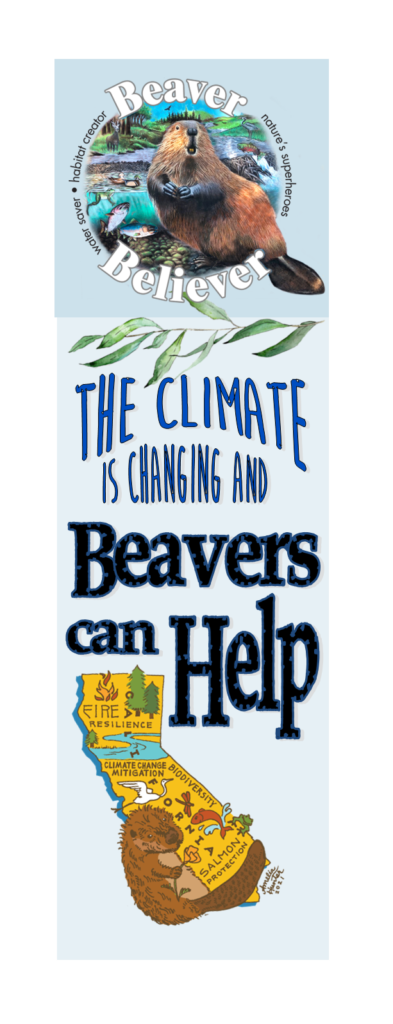 that they collect from participating booths each showing a child-friendly illustration of how beavers can assist with reducing fires, floods, drought and extreme temperatures. The stamps will have been drawn for us by a talented character artist with a special interest in children’s art. Children will ‘earn’ these stamps by visit corresponding booths and learning how beavers play a role in resolving the issue.
that they collect from participating booths each showing a child-friendly illustration of how beavers can assist with reducing fires, floods, drought and extreme temperatures. The stamps will have been drawn for us by a talented character artist with a special interest in children’s art. Children will ‘earn’ these stamps by visit corresponding booths and learning how beavers play a role in resolving the issue.
Participating groups will be designated on the map and by a sign at the booth showing the issue beavers can address. The booth signs will be the same engaging cartoons that show how beavers can help each issue. A child will explain (or have explained) the signs and receive a stamp showing that particular ability to add to their bookmark. When all six stamps are collected, children can return to the starting booth to receive a recognition: A Canadian nickel reminding them than beavers can help with climate “Change”. They can keep the bookmark and nickel to remember what they’ve learned and share with others. They will then be invited to take a post quiz about beavers as superheroes.
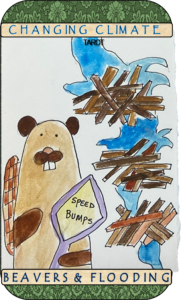 Doesn’t that sound like fun? I mean in the sense anything about climate change can be fun…The cute drawings on the stamps will be made by our beaver buddy Erika who has helped at the festival for years, and I’m expecting the message to penetrate even the most adult minds.
Doesn’t that sound like fun? I mean in the sense anything about climate change can be fun…The cute drawings on the stamps will be made by our beaver buddy Erika who has helped at the festival for years, and I’m expecting the message to penetrate even the most adult minds.
Well that’s the theory anyway. Now the application sits in the hands of the committee and hopefully they can can see their way towards kindly helping us again. I must admit I’m a little daunted by the approaching new year as we stagger towards January. It means I have to finally buckle down and start getting all the things together.
Believe it or not, June will be here far sooner than either of us can imagine.


